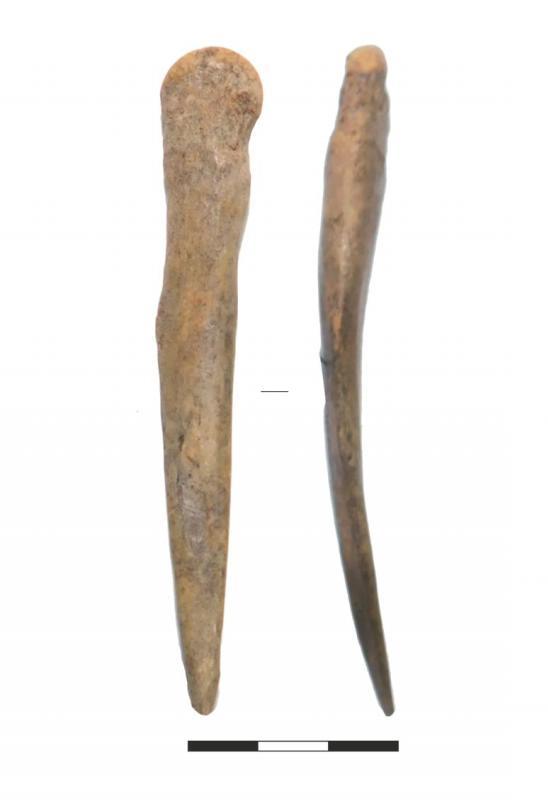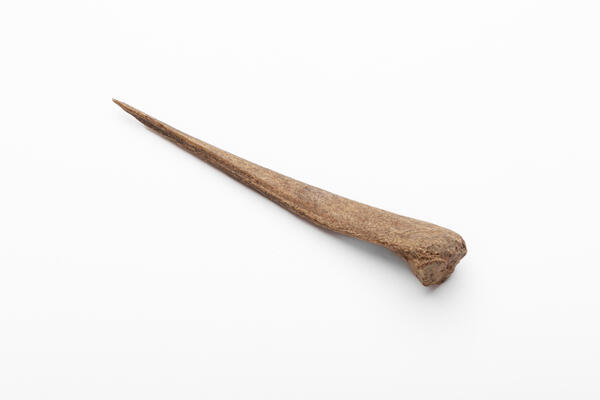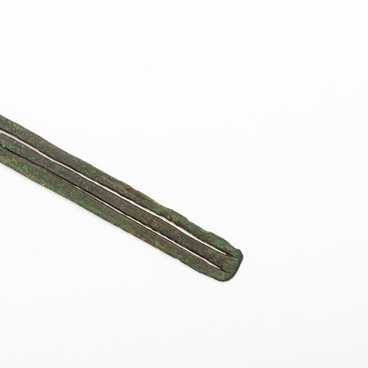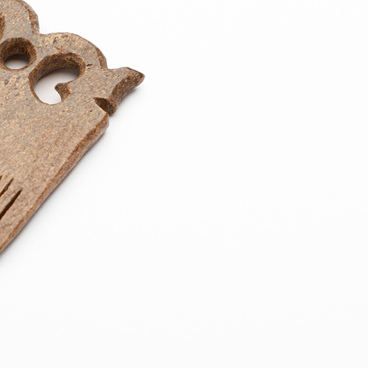Awls appeared in primitive society. In the Stone Age, they were used to make holes when stitching pelts; over time, they began to be used to apply designs to clay vessels and talismans.
An awl looks like a pointed stick with a thickened or ornately shaped top part, sometimes with a hanging hole. In the Middle Ages, people of the Prikamye region used awls made from splint bones of horses, cows or elks. Awls were fairly easy to make: the bone was only slightly shaped at the tip and sharpened. Over time, bone and wood awls were replaced by metal ones.
Items made of bone constitute a significant part of finds at the medieval hillfort of Idnakar. This natural material has always been available, relatively easy to process, very strong and durable. Bone processing was similar to that of wood, but due to the hardness of the material, it required special tools and diligence.
Before starting to give the bone the desired shape, it was left in a closed vessel with a special solution for a few days. Natural acids were added to it, such as mustard, ground sorrel, sour milk, as well as alkalis and wood ash.
At the next stage of processing, the bone was degreased and then boiled for a long time in lye. After this, it became soft, malleable and pliable. Under the influence of temperature and steam, bone tissue was easily cut and, if necessary, straightened under pressure.
Craftsmen preferred to process tubular bones of cows, horses, deer or elks, splint bones of horses, elks and deer, elk and deer antlers, boar tusks and bird bones. Bone and horn are qualitatively different as materials. Bone is hard and elastic, while horn is more viscous and is best cut raw.
From bone and horn, Idnakar craftsmen carved trade and hunting tools, jewelry, household items, cutlery and arrowheads. Awls are very common finds that are well preserved due to the material they are made of and small size. There are hundreds of them in the collections of the Idnakar Museum.






